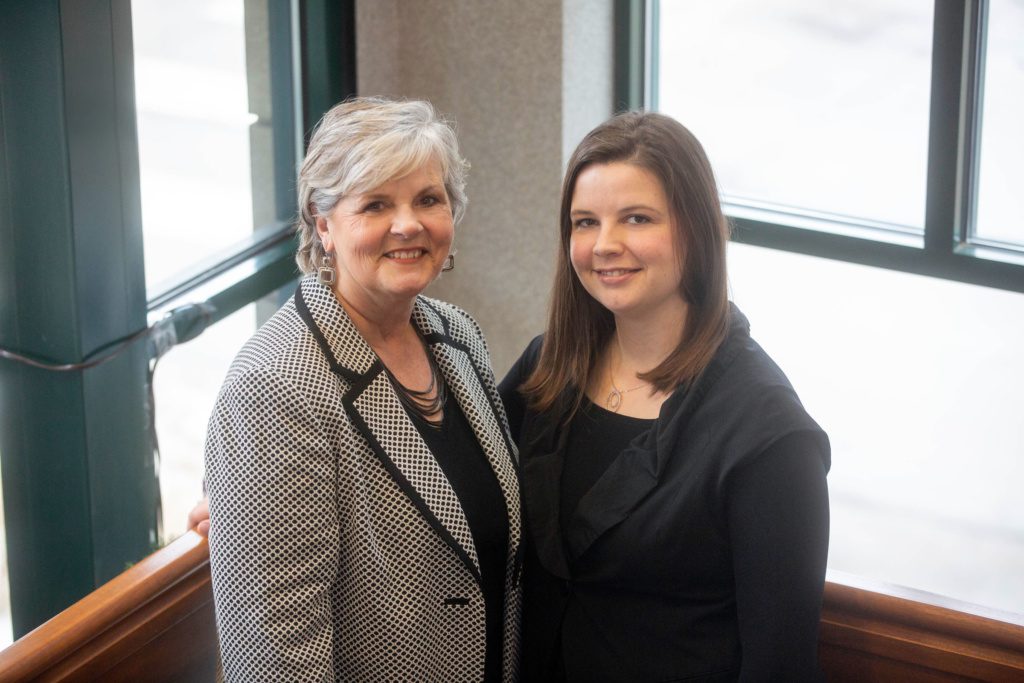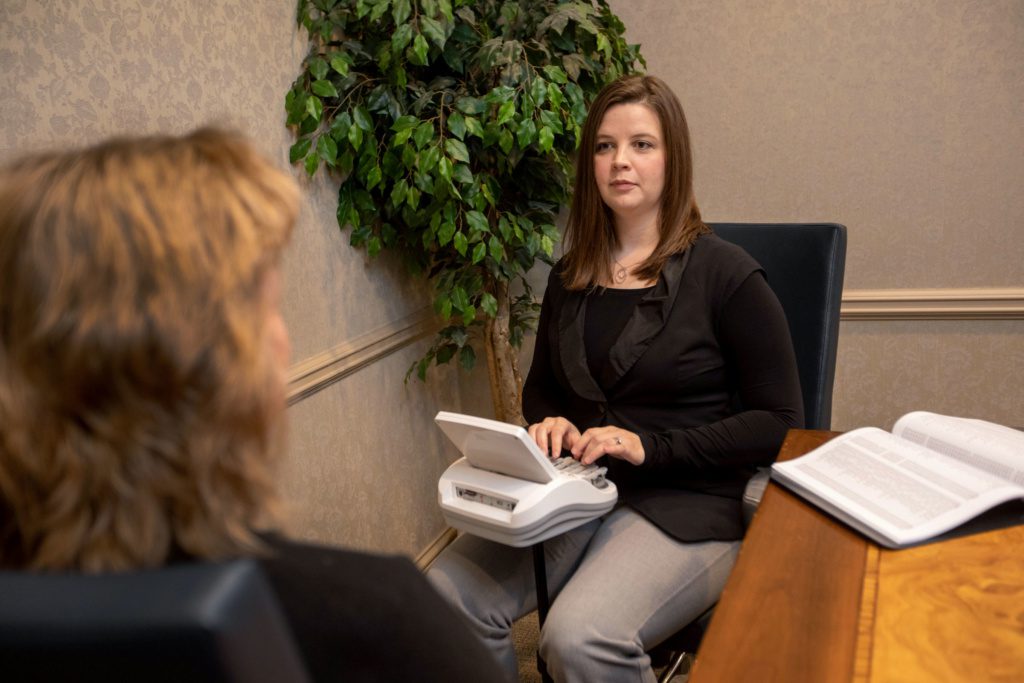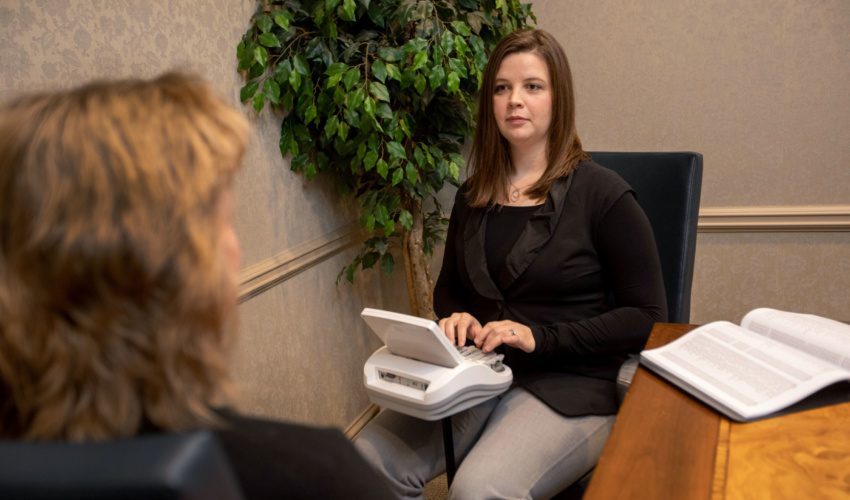Court reporter shortage leaves legal world scrambling
Jan. 6, 2020
By John Hult, for SiouxFalls.Business
Karl Thoennes has a recruitment problem.
That’s not an uncommon story for a Sioux Falls-based employer. But even in a city where fast-food restaurants paste walk-in interview posters, hiring bonuses and starting salaries at front doors and cash registers, the Second Judicial Circuit Court administrator’s difficulties stand out.
The circuit posted an ad for a court reporter in April 2019, and Thoennes has yet to see a single resume.
Even in the state’s largest circuit, encompassing Lincoln and Minnehaha counties, with a quality wage and the widest range of urban amenities the Rushmore State has to offer, the posting continues to gather proverbial dust.
The anecdote speaks to a nationwide shortage in court reporters, the transcriptionists whose work forms the basis of the official judicial record in every legal proceeding in the country.
Without them, nothing can proceed.
The National Court Reporters Association, or NCRA, reported 168 graduates in 2017. The same report noted a need for 5,500 more court reporters nationwide by 2018.
“No one wants to grow up to be a court reporter anymore,” Thoennes said.“The profession is just vanishing. To sit there transcribing at a keyboard, I think it just seems tedious to people.”
The shortage that has left Thoennes in search of talent has kept those who have taken up the field busy.
Court reporter Paige Franzen followed her mother, Pat Beck, into the field in 2011 after earning a degree from the now-defunct Colorado Technical University in Sioux Falls.
Franzen and Beck haven’t considered applying for a courtroom position, and they haven’t had to. They both work well over 40 hours a week, carrying their stenotype machines to the offices of lawyers or doctors, courtrooms or private homes to make a record of depositions and other legal proceedings.
“People are looking for court reporters all the time,” Beck said. “We are not hurting for work.”
Franzen was drawn to the freelance court reporting business for reasons she sees as appealing to young people: flexibility, knowing each day will bring something new and the knowledge that her skill set would remain in demand regardless of which way the economy turns.
“We’re actually at the point where we’re turning away work,” Franzen said.
Beck sees a real need to recruit new court reporters in a state where the average stenographer is in his or her mid-50s. But she’s also not convinced the profession will disappear.
“When I went to school, I was told that it was a dying industry, that technology was taking over and we’d all be out of a job,” Beck said. “But the technology has been our friend.”
Stenotype keyboards haven’t changed dramatically since their invention in the 19th century, but they’re far simpler and faster to use. Beck and Franzen’s machines display the phonetic shorthand they type using the 10-key device on the right edge of a small screen and the English version in the left and center. The data is backed up with a memory card and on a computer, with transcripts checked and rechecked before submission into the official record.
The same software can be used in the U.S. House of Representatives and U.S. Senate, and for closed captioning of live and televised events, such as the Coachella music festival in California or major league baseball, football or basketball games.
“This is a technology field,” Beck said.
There is little doubt, however, that the technology that has made transcription easier and more useful in and out of the courtroom plays into the current shortage.
For decades, states have moved from live stenography to on-demand transcription of audio or audio-visual records, collected by microphones and cameras often monitored in real-time by court reporters.
South Dakota made a conscious choice to stick with human court reporters for the lion’s share of in-court proceedings several years ago, according to Chief Justice David Gilbertson of the South Dakota Supreme Court. The choice was a calculated one, made in hopes of building a more welcoming work environment for court reporters displaced by technology.
“It was kind of bucking the national trend at the time, but I assumed that if the rest of the country was going the other way, we would have an abundance in South Dakota,” Gilbertson said.
The strategy worked at first, but the supply of new talent started to dry up. If the hiring situation in Sioux Falls is dire, it’s even more so in the state’s more far-flung rural enclaves. Winner in south-central South Dakota has been on the lookout for a new court reporter since March.
“We struggle most to recruit people to the more rural places — the Selbys, the Sissetons, the Winners,” Gilbertson said. “We’re pretty aggressive in our recruiting, but it’s getting harder all the time.”
The Unified Judicial System has had a committee of judges, court reporters, court administrators and attorneys tasked with recruitment for about a decade. Court reporters from the state will appear around the country at job fairs, pitching the virtues of South Dakota’s court system and the state’s quality of life.
But Gilbertson acknowledges that the compelling arguments for entering the field — the stability, the extra money from freelance transcriptions and the like — could be made by nearly any recruiter in any state.
That’s one message Beck hopes young people consider: Even in states that rely more heavily on audio-visual court records, a human reporter is needed to check for accuracy. Stenographers who can speak another language can think globally, as well, as stenotype machines are used worldwide.
“If you learn this skill, you can basically punch your own ticket,” she said.
That’s a message pushed by the NCRA as well. The organization’s recruitment efforts include another enticement: a free, six-week stenography course. The group’s A to Z Program will send interested students a stenotype machine, which they use during live and online coursework to determine if they’d like to keep learning. Full training takes about two years, with certification based on 97 percent accuracy in a series of tests.
“It’s a way to see if people are interested, have a knack or ability for it before making a financial commitment because it’s challenging,” Franzen said.
It remains to be seen if such efforts will improve South Dakota’s situation in time to make a difference.
Indeed, the slow-moving crisis has forced some changes already. The Second Circuit uses human court reporters for trials and circuit court hearings, but it leans on a CourtSmart system for magistrate cases, with one court reporter handling 12 courtrooms at once.
Such systems can be controversial, and human court reporters often will raise questions about accuracy. Court reporters will raise their hand to cut off heated cross talk to prevent a muddled written record — a function audio-visual systems cannot do.
“There are so many moving parts to a deposition or in a courtroom hearing,” Beck said. “You’re not just taking notes. You’re making a record.”
And, of course, there’s always the possibility that a system will malfunction or fail, dropping key portions of a proceeding.
But the systems have proliferated in spite of those concerns. The up-front cost of an audio-visual system can pay off quickly in efficiency, and advocates for electronic systems have their own take on accuracy. Audio and video amount to a record not just of words spoken but also of the vocal inflections and body language cues that can be meaningful in courtroom settings.
Whether the trend is tagged to efficiency, changing attitudes toward careers in transcription or state-by-state policy changes, the numbers are stark.
Just 25 court reporting schools remain across the United States, down from more than 106 in 1996. The Stenotype Institute of South Dakota is long gone, as are court reporting and paralegal programs at schools like Colorado Tech, Nettleton Junior College, National American University and Kilian Community College.
Thoennes hopes to see the state move swiftly to respond. Court reporters are outnumbered by judges, court service officers and clerks within the Unified Judicial System, but their numbers belie their importance. Court proceedings cannot take place without a reporter nor can out-of-court proceedings such as depositions.
“We haven’t gotten to the point yet where we can’t have court because we don’t have a reporter, but we’ve got to do something bold — and quickly,” Thoennes said.











